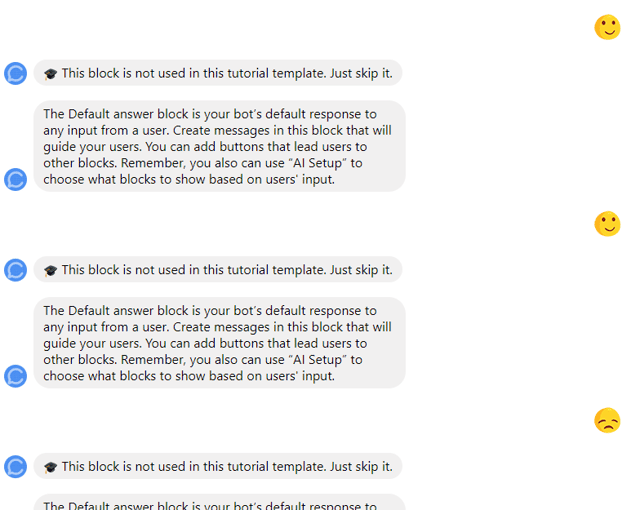Forget Bots (For Now): Why Customer Engagement Still Needs a Human Touch
You’ve probably heard all the same talk I did.
“Robots and AI are the future!”
“Automation and personalization are the next great wave of customer engagement!”
A robot that’s going to handle customer requests? An automated system that’s going to craft personal messages delivered through the right medium at just the right time?
How stinking cool is that?! Sign me up.
35% of brands said Artificial Intelligence/Chatbot Integration was the next big opportunity for their loyalty program (3Cinteractive)
After hearing so much of this chatter at a recent marketing conference, I dove into building a bot and automation system that would take our engagement to another level.
Well, friends, I found that bots are really easy to build.
At least, if all you want is something that will respond only to very specific questions, while sending a nice smiley emoji to everything else.

A bot that actually helps people and solves problems? That’s going to take some time and learning.
It takes 12 positive customer experiences to negate the poor impression left behind from one unresolved, bad experience (BI Intelligence)
The Current Limitations of AI and Bots
People are complicated and have a number of things they want to talk about, and if they’re not served the right information in a timely manner, or they feel disrespected, they can turn salty very quickly.
The big takeaway, which hit me quickly and like a ton of bricks, is that there are no shortcuts on the path to customer engagement. It can't be faked.
78% of consumers are not loyal to a particular brand (Nielsen)
Check out more loyalty statistics here
No bot is going to do what humans are failing to do, right now.
No automation or hyper-personalization is going to boost engagement on a mass scale, right now.
 As cool as it would be, these tools don’t come ready to perform right out of the box. They have be tuned like any other piece of technology.
As cool as it would be, these tools don’t come ready to perform right out of the box. They have be tuned like any other piece of technology.
If you’re like me and not as in tune with customer sentiment as you should be, then technology isn’t going to help much.
In fact, it could make incompetence and indifference even more widespread.
Tools like chatbots, AI and personalization engines will only succeed when they’re infused with human understanding of what customers want. They’ll only become truly useful when we’re able to task our data to do more than make more sales.
Customer Success as an Example
If you need further evidence that bots aren’t quite ready for prime time yet, check out the growth of the Customer Success movement, which spawns primarily from technology, software as a service companies.
As smart and forward-thinking as those companies tend to be, they realized that their best shot for engagement and retention is a team of people tasked with holding customer hands.
(We’re on the bandwagon with it too - check out these articles by our VP of Client Success, Emily Hayes.)
Customer Success is teams of people staying in constant contact with clients, watching and interpreting data for any signs of success and rooting out failure before it happens.
In other words, it’s kind of the opposite of bots. It’s a tacit acknowledgement that today, data is just a tool. Data isn’t the story; the person behind it is, and your ability to succeed is parallel with your ability to internalize your customers’ goals.
Understand Customers Intensely Before You Apply Technology
In my journey to build a bot that would talk intelligently to visitors to Access websites, it became clear to me that I needed to spend way more time in the trenches.
I needed to figure out what people were really looking for and what problems they needed to solve; so I launched live chat boxes on AccessDevelopment.com and AccessPerks.com, among other sites. I’m listening and responding to dozens of requests, questions, complaints, sales pitches, and everything else our visitors want to talk about.
 I’m also connecting with our internal service teams to learn their processes and how I can best pass along people that need their help.
I’m also connecting with our internal service teams to learn their processes and how I can best pass along people that need their help.
In other words, I’m leaning all of this from scratch so that my future bots will have the same knowledge and hopefully the same empathy.
After all, the robot will only be as useful as I tell it to be. That’s dependent on my understanding of what people want.
Too many companies are looking for some sort of quick solution to struggling loyalty and sagging customer engagement. Simply adding a robot, or even the smartest AI, isn’t going to fix that.
Only a deeper sense of empathy and internalization of the customers’ true intentions and desires are going to do that.
Unfortunately, that’s a manual, tedious learning process. One that most companies are going to be unwilling to partake.
Topics: Customer Engagement
Written by: Brandon Carter






.jpeg)







Share your Comment.